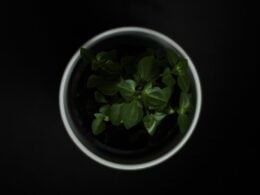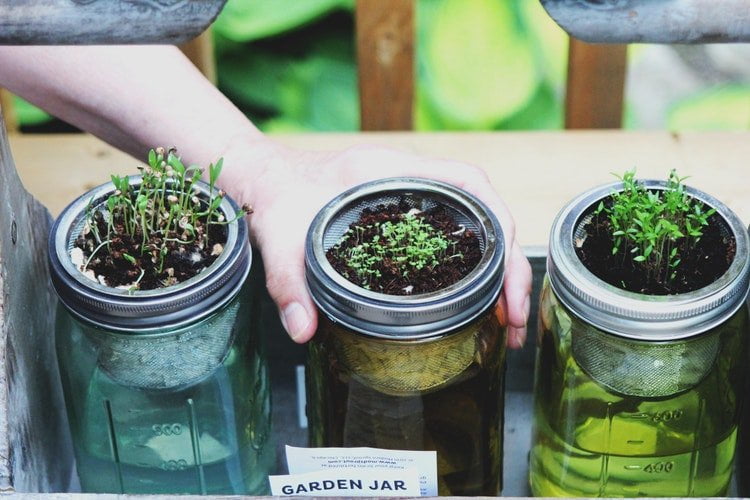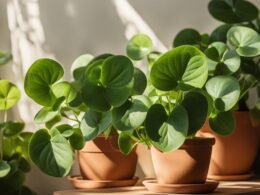Welcome to our comprehensive guide on growing marigolds and nasturtiums together through the art of companion planting. By strategically pairing these two beautiful flowering plants, you can create a harmonious garden that not only enhances the aesthetics but also provides numerous benefits for your plants.
Companion planting involves planting different types of plants close to each other to maximize their potential and create a mutually beneficial environment. Marigolds and nasturtiums are the perfect companions, as they offer unique advantages that can promote healthy growth and ward off common garden pests.
Post Summary:- Companion planting involves planting different types of plants close to each other for mutual benefits.
- Marigolds repel pests like nematodes, rabbits, and deer, while nasturtiums attract pollinators like bees and butterflies.
- Both marigolds and nasturtiums are easy to grow and make excellent companion plants due to their individual benefits.
- To grow marigolds and nasturtiums together, choose a sunny spot with well-drained soil and plant them at the same time.
- Harvest marigold and nasturtium flowers for culinary uses, as they are both edible and add flavor and color to dishes.
Understanding Marigolds and Nasturtiums: Benefits and Uses
Marigolds and nasturtiums are versatile plants that offer a range of benefits and uses in your garden. By understanding the unique qualities of these two plants, you can maximize their potential and create a thriving and beautiful garden space.
Benefits of Marigolds
Marigolds are renowned for their pest-repelling properties. They release a chemical called alpha-terthienyl, which deters nematodes, rabbits, and deer from your garden. This natural pest control method allows your other plants to grow without the threat of these common garden pests. Additionally, marigolds inhibit weed growth, reducing the need for herbicides and manual weeding.
Uses of Marigolds
Aside from their pest-repelling properties, marigolds have other practical uses. The vibrant flowers can be harvested and dried to create natural dyes for fabrics and crafts. Marigold petals can also be infused in oils or made into teas for their medicinal properties. Their bright colors make marigolds a popular choice for floral arrangements and adding a pop of color to any garden.
Benefits of Nasturtiums
Nasturtiums are attractive flowering plants that bring several benefits to your garden. Their bright, orange or yellow flowers attract pollinators like bees and butterflies, enhancing the biodiversity of your garden. Nasturtiums also have a natural peppery scent, which acts as a deterrent to certain pests, including aphids and whiteflies. This pest control mechanism helps to protect your other plants from damage and infestations.
Uses of Nasturtiums
Nasturtiums are not only beautiful but also edible. The leaves, flowers, and seeds of nasturtiums can be consumed and added to a variety of dishes. The leaves have a peppery flavor, similar to watercress, and can be used in salads or as a garnish. The vibrant flowers make an attractive addition to salads and can even be stuffed and used as decorative appetizers. Nasturtium seeds can be pickled and used as a substitute for capers, adding a unique twist to your culinary creations.
By understanding the benefits and uses of marigolds and nasturtiums, you can make the most of these companion plants in your garden. Whether it’s repelling pests, attracting pollinators, or adding beauty and flavor to your culinary endeavors, these plants offer a wealth of possibilities.
Comparison of Marigolds and Nasturtiums
| Metric | Marigolds | Nasturtiums |
|---|---|---|
| Pest Repelling | ✔ | ✔ |
| Weed Inhibition | ✔ | ✘ |
| Pollinator Attraction | ✘ | ✔ |
| Edible | ✘ | ✔ |
Overall, marigolds and nasturtiums are versatile plants that bring numerous benefits to your garden. Whether you’re looking to repel pests, attract pollinators, inhibit weed growth, or simply enjoy their beauty and culinary uses, these plants are an excellent addition to any garden space.
The Benefits of Companion Planting Marigolds and Nasturtiums
Growing marigolds and nasturtiums together offers a multitude of advantages for your garden. These two plants work in harmony to protect and enhance each other’s growth and health. Let’s explore the benefits of companion planting marigolds and nasturtiums:
1. Pest Repellent
Marigolds are known for their pest-repellent properties. They emit a scent that deters nematodes, rabbits, and deer, helping to protect not only themselves but also neighboring plants. By planting marigolds alongside nasturtiums, you create a natural barrier against these common garden pests.
2. Pollinator Magnet
Nasturtiums are excellent attractors for pollinators like bees and butterflies. Their vibrant flowers and sweet nectar provide a valuable food source for these beneficial insects. By planting them alongside marigolds, you create a welcoming environment for pollinators, ensuring the successful fertilization of your flowers and the growth of your garden.
| Benefits of Companion Planting Marigolds and Nasturtiums | Marigolds | Nasturtiums |
|---|---|---|
| Pest Repellent | Repels nematodes, rabbits, and deer | |
| Pollinator Magnet | Attracts bees and butterflies |
3. Weed Control
In addition to repelling pests and attracting pollinators, marigolds also inhibit weed growth. They produce a chemical that suppresses the germination and growth of weeds. Planting marigolds alongside nasturtiums can help keep your garden beds clear of unwanted plants, reducing the need for manual weeding.
By taking advantage of the benefits of companion planting marigolds and nasturtiums, you create a balanced and thriving garden ecosystem. These two plants complement each other’s natural defenses and contribute to the overall health and beauty of your garden.
How to Grow Marigolds and Nasturtiums Together
To grow marigolds and nasturtiums together, you’ll need to follow a few simple steps. Start by selecting healthy plants from seeds or nurseries that specialize in organic gardening. Choose a sunny spot in your garden with well-drained soil and a neutral pH. These two plants thrive in full sun, so make sure to provide them with at least six hours of direct sunlight each day.
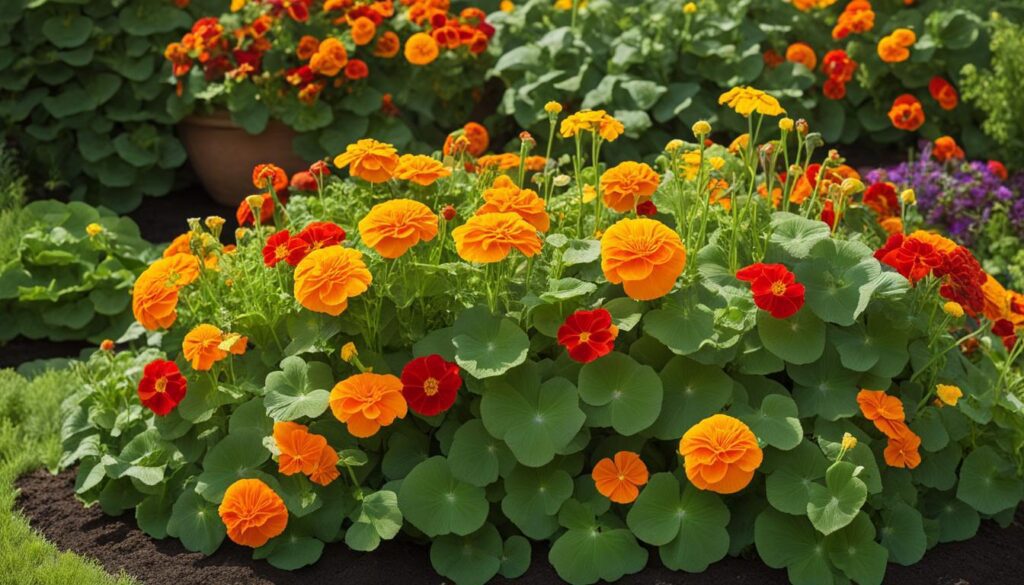
Plant your marigolds and nasturtiums at the same time to align their growing requirements. You can sow the seeds directly into the ground or start them indoors a few weeks before the last frost date. Follow the instructions on the seed packet for the correct planting depth and spacing.
Water your plants regularly, keeping the soil moist but not waterlogged. Marigolds and nasturtiums both prefer slightly dry conditions, so avoid overwatering. Fertilize monthly with a balanced, organic fertilizer to provide the necessary nutrients for healthy growth.
Once your plants are established, enjoy the vibrant blooms of marigolds and nasturtiums throughout the season. Deadhead the flowers regularly to encourage more blooms and prevent the plants from going to seed too quickly. By following these tips, you can successfully grow marigolds and nasturtiums together and create a beautiful and beneficial garden.
Harvesting Tips for Marigolds and Nasturtiums
Once your marigolds and nasturtiums have bloomed, it’s time to harvest their beautiful flowers for various culinary uses. Both marigold and nasturtium flowers are not only visually stunning but also edible, adding flavor and color to your dishes. Here are some essential harvesting tips to make the most of your marigolds and nasturtiums:
- Timing: Harvest the flowers in the morning when they are at their freshest and most vibrant. This is when the flavors and aromas are at their peak.
- Selection: Choose fully opened flowers that are free from blemishes or signs of decay. The petals should be firm and brightly colored.
- Method: Gently pluck the flowers from the stem, taking care not to damage the plant. You can use your fingers or a pair of clean scissors.
- Storage: To extend the shelf life of the harvested flowers, place them in a container with a damp paper towel and store them in the refrigerator. They should stay fresh for up to a week.
Now that you know how to harvest marigolds and nasturtiums, let’s explore the various uses for their vibrant flowers:
“The marigold petals can add a pop of color to salads, soups, and stews. They have a slightly tangy and floral flavor that complements both savory and sweet dishes. Nasturtium flowers, on the other hand, have a peppery taste similar to watercress or radishes. They can be used to add a spicy kick to salads or as a substitute for radishes in sandwiches.”
Both marigold and nasturtium flowers not only elevate the visual appeal of your culinary creations but also provide unique and delightful flavors to your dishes. Experiment with different recipes and let your creativity flourish with these edible flowers!
| Marigold Flowers | Nasturtium Flowers |
|---|---|
| Colorful addition to salads | Peppery flavor |
| Garnish for desserts | Substitute for radishes |
| Infusing oils or vinegars | Edible decoration for cakes |
So go ahead and enjoy the beauty and taste of marigold and nasturtium flowers by incorporating them into your culinary adventures!
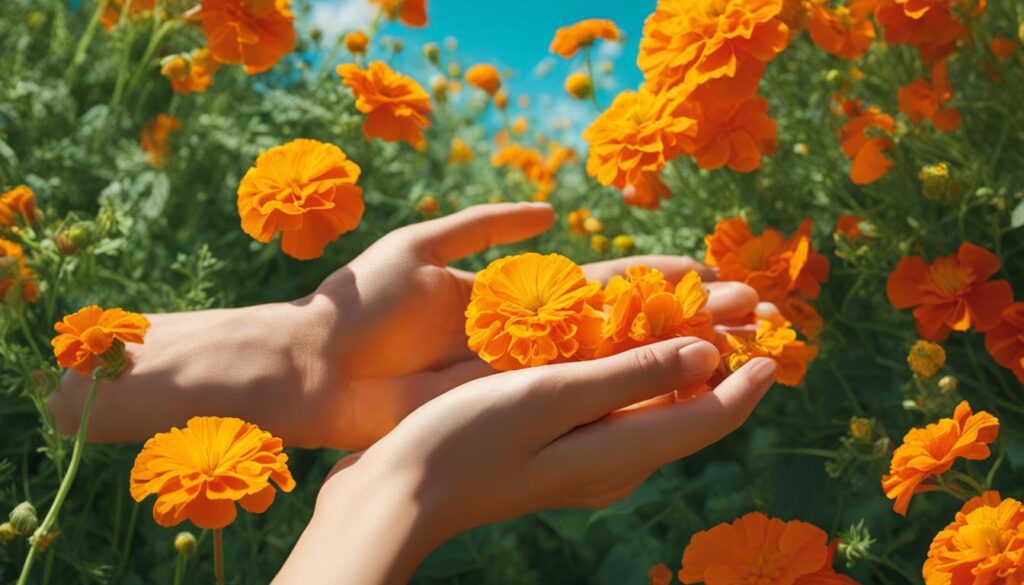
Tips for Caring for Marigolds and Nasturtiums
Proper care is essential for maintaining healthy marigold and nasturtium plants in your garden. By following these tips, you can ensure that your plants thrive and continue to provide the numerous benefits that companion planting offers.
Planting and Location
When selecting a location for your marigolds and nasturtiums, choose a spot that receives full sun and has well-drained soil. Both plants prefer these conditions and will flourish when given the proper environment.
It’s also important to plant marigolds and nasturtiums at the right time. They should be planted together at the same time and align with their growing requirements. This will help ensure that both plants receive the necessary nutrients and sunlight for optimal growth.
Watering and Fertilization
Marigolds and nasturtiums require regular watering to keep the soil moist but not waterlogged. Check the soil’s moisture level by inserting your finger into the soil up to the first knuckle. If it feels dry at that depth, it’s time to water.
In terms of fertilization, both plants benefit from monthly fertilization during their growing season. Use a balanced fertilizer with equal parts nitrogen, phosphorus, and potassium to provide the necessary nutrients for healthy growth and vibrant blooms.
Maintenance and Pruning
Maintaining the health of your marigolds and nasturtiums involves regular maintenance tasks such as deadheading. Deadheading is the process of removing spent flowers to promote new blooms. This not only keeps your plants looking tidy but also encourages continuous flowering throughout the season.
In the case of nasturtiums, it’s important to regularly harvest the leaves and flowers. This will prevent the plants from becoming too leggy and promote bushier growth. Plus, you get to enjoy the peppery flavor of nasturtium leaves and use them in your culinary creations.
By following these care tips, you can ensure that your marigolds and nasturtiums remain healthy and continue to provide the multiple benefits they bring to your garden. Remember to give them the proper sunlight, water, and nutrients they need, and enjoy the beauty and rewards of growing these companion plants in harmony.
Can Cucumbers and Radishes Be Companion Plants?
When planning your garden, consider growing cucumber and radish together as companion plants. These two veggies complement each other’s growth and deter pests. Radishes mature quickly, providing shade and protection for developing cucumber plants. The cucumbers, in turn, offer a leafy canopy that prevents weeds from sprouting around radishes.
Conclusion
Marigolds and nasturtiums are excellent companion plants that bring multiple benefits to your garden. By growing them together, you can naturally repel pests, attract pollinators, inhibit weed growth, and add beauty to your landscape. The combination of marigolds and nasturtiums creates a harmonious environment that promotes healthy growth and enhances the overall health of your garden.
When planted together, marigolds act as natural pest deterrents, keeping nuisances like nematodes, rabbits, and deer at bay. Their strong aroma and natural compounds make them a reliable defense against unwanted invaders. On the other hand, nasturtiums attract beneficial insects like bees and butterflies, ensuring effective pollination for your entire garden.
In addition to their pest-repelling and pollinator-attracting properties, marigolds and nasturtiums also work together to inhibit weed growth. Marigolds produce a chemical that suppresses the growth of weeds, reducing the competition for nutrients and sunlight. This means less time spent pulling weeds and more time enjoying the beauty of your flourishing garden.
By following the provided tips on how to grow and care for marigolds and nasturtiums, you can create an environment that encourages their mutual benefits. Plant them in a sunny spot with well-drained soil, water regularly, and fertilize monthly to provide them with the optimal conditions for growth. With a little care and attention, you’ll soon be rewarded with vibrant blooms and a thriving garden.
So, roll up your sleeves, put on your gardening gloves, and get ready to experience the rewards of growing marigolds and nasturtiums in harmony. Your garden will be a haven for beneficial insects, a fortress against pests, and a stunning display of colors. Happy gardening!
FAQ
Can I plant marigolds and nasturtiums together?
Yes, marigolds and nasturtiums make excellent companion plants and can be planted together to enhance your garden.
What benefits do marigolds provide?
Marigolds repel pests like nematodes, rabbits, and deer. They also produce a chemical that inhibits weed growth.
What benefits do nasturtiums provide?
Nasturtiums attract pollinators like bees and butterflies and deter some pests.
How do I grow marigolds and nasturtiums together?
Start with healthy plants, choose a sunny spot with well-drained soil, and plant them at the same time. Water regularly and fertilize monthly.
Can I eat the flowers of marigolds and nasturtiums?
Yes, both marigold and nasturtium flowers are edible and can be used in salads or as a garnish.
How do I care for marigolds and nasturtiums?
Marigolds and nasturtiums thrive in full sun and well-drained soil. They need regular watering, monthly fertilization, and deadheading of flowers. Harvest nasturtium leaves and flowers regularly.






